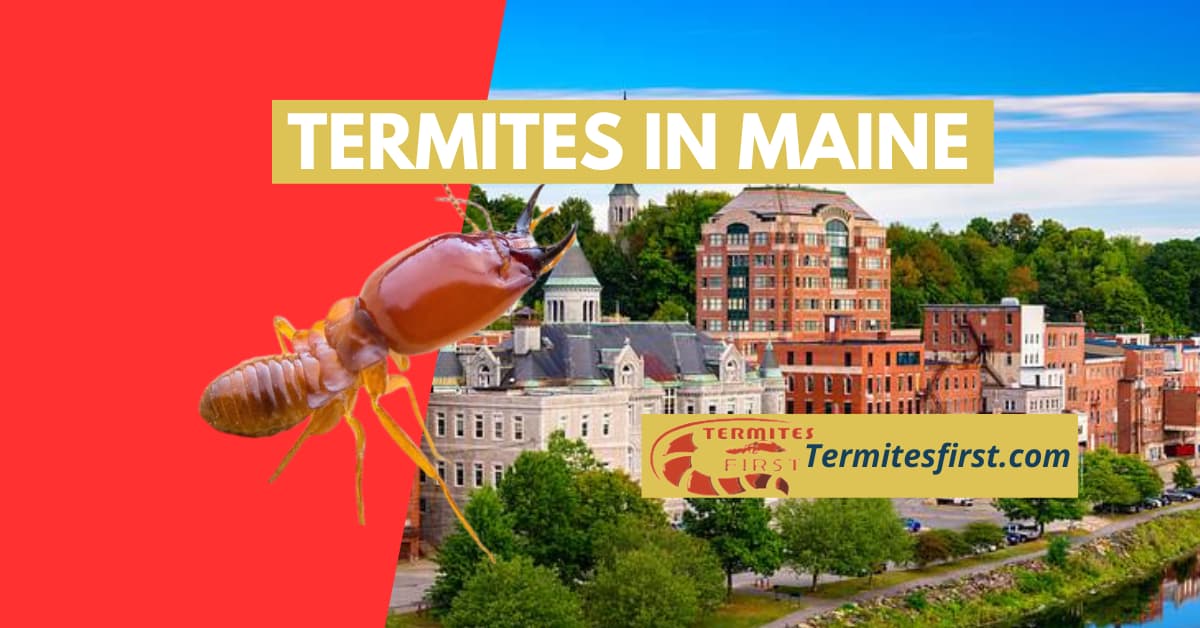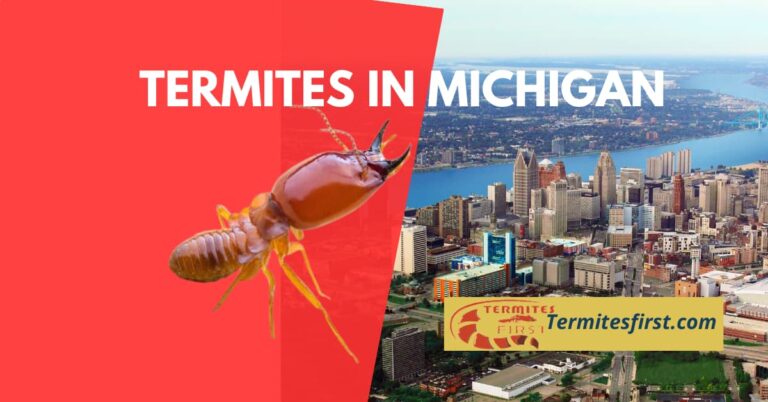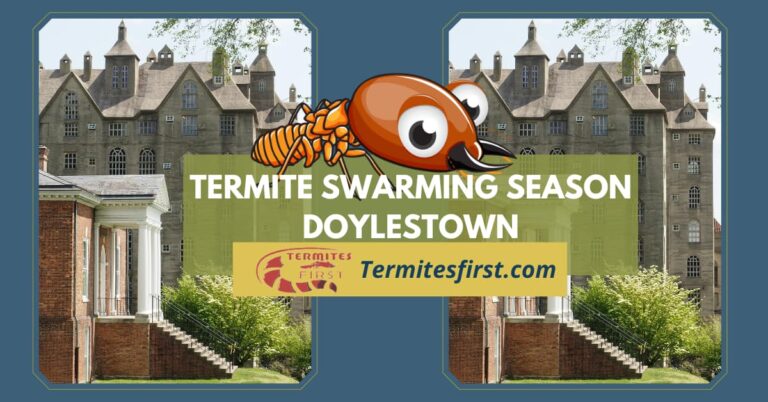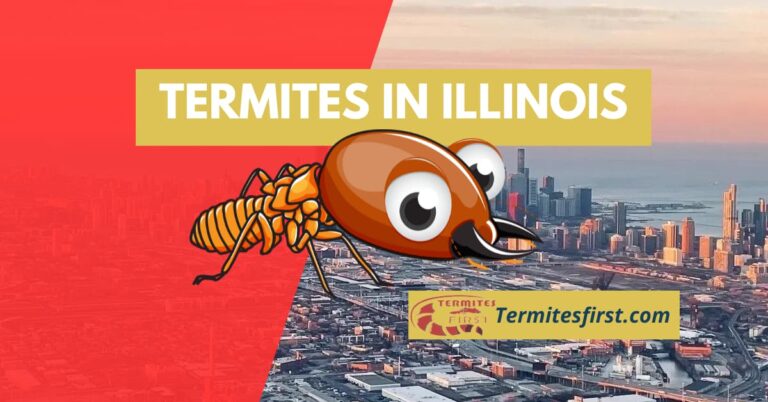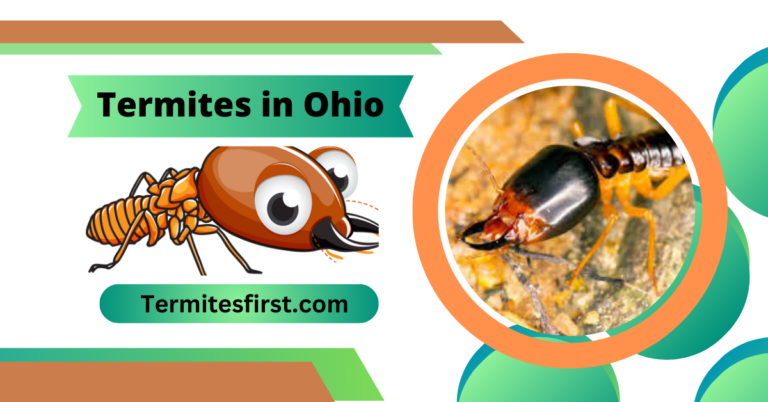Termites in Maine: Surprising Insights and Essential Facts
I’ve seen the damage termites in Maine can cause. These pests, including drywood termites, thrive in our humid climate, and their presence can lead to a major termite problem and costly repairs due to current termite problems. While some homeowners believe they’re safe from carpenter ants and active termites, I know that even the smallest signs of infestation can lead to big problems, making it essential to consult a termite control expert for effective termite prevention.
Ignoring them could mean disaster for your home. I want to share what I’ve learned about identifying, preventing, and dealing with termites and carpenter ants effectively in the state of South Maine. This post will guide you through the essential steps for effective termite prevention to protect your property from these destructive insects and address any current termite problem caused by active termites or a termite infestation. Let’s dive into the world of termites and carpenter ants and arm ourselves with knowledge to keep our homes safe in the state of South Maine.
Key Takeaways
- Termites and carpenter ants are a significant threat in the state of Maine, especially subterranean species that can damage wooden structures.
- Familiarize yourself with the signs of termite infestation, such as mud tubes and damaged wood caused by active termites or drywood termites, to catch problems early in your state of South Maine.
- Be aware of the swarming season in late spring to early summer in the state of South Maine when termites are most active and likely to infest homes.
- Regularly inspect your property in south maine for signs of termites, especially in areas with moisture or wood contact with the ground.
- Implement prevention tips like reducing moisture around your home in south maine and sealing cracks to deter termites from entering.
- If you suspect an infestation, such as drywood termites, consider professional treatment options like a real estate termite inspection for effective removal and long-term protection in South Maine.
Understanding Termites in Maine

Ecological Role
Termites play a vital role in the ecosystem. They help recycle wood and plant material. This process enriches the soil and promotes new plant growth. In Maine, their activity breaks down dead trees and decaying plant matter, contributing to termite infestation and highlighting the need for a real estate termite inspection. This is essential for maintaining healthy forests.
I find it fascinating how such small creatures, like a termite infestation, can have a big impact on the environment. Their ability to convert wood into nutrients, especially during a termite infestation, helps sustain the forest ecosystem.
Environmental Conditions
Maine has specific environmental conditions that support termite populations. The state’s humid summers and mild winters create an ideal habitat for them. Termites thrive in areas with abundant moisture and organic material. Regions like southern Maine have higher termite activity due to warmer temperatures.
In my experience, I’ve noticed that homes near wooded areas are more prone to termite infestations. The presence of decaying wood provides a perfect food source for these pests.
Climate Change Impact
Climate change affects termite behavior and distribution. Warmer temperatures may expand their range further north into northern Maine cities. Increased humidity can also lead to larger termite colonies. These changes may result in more frequent infestations in homes.
Research indicates that as temperatures rise, termites become more active earlier in spring. This shift could lead to longer feeding seasons and increased damage to wooden structures.
I worry about the potential consequences of climate change on our local ecosystems. The spread of termites could pose challenges for homeowners and the environment alike.
Common Termite Species
Subterranean Termites
Subterranean termites are the most common species found in Maine. They live underground and build extensive tunnel systems. These tunnels allow them to reach wood sources for food. Unlike dry wood termites, they require moisture from the soil. Their colonies can grow large, sometimes containing millions of individuals. I often think about how their hidden nests can cause serious damage before being detected.
Dry Wood Termites
Dry wood termites are less common in Maine. They prefer warmer climates and typically do not survive harsh winters. These termites infest dry wood, which makes them different from subterranean species. They do not need contact with the ground for moisture. Understanding their presence is crucial for homeowners, especially if they plan to relocate or travel to warmer regions.
Geographical Limitations
Maine’s cold climate limits termite activity. Most species thrive in warm, humid environments. The primary concern here remains with subterranean termites. They can adapt to colder temperatures but require certain conditions to survive. This means that while we may see fewer infestations in winter, spring and summer bring a rise in termite activity.
Importance of Local Knowledge
Understanding local termite species is vital for effective pest management. Different species have unique behaviors and needs. Knowing whether you are dealing with subterranean or dry wood termites helps in choosing the right control methods. For example, effective termite control strategies differ significantly between these species.
I learned that having a licensed termite inspector assess your property is essential. They can identify signs of infestation early on. This includes looking for termite pellets, which indicate an active colony nearby.
Future Infestations
As temperatures rise due to climate change, future termite infestations may become more common in Maine. Warmer winters could allow more species to thrive here. Homeowners should stay vigilant and monitor for signs of termites throughout the year.
Recognizing Subterranean Termites

Physical Traits
Subterranean termites have distinct physical features. They are generally small, measuring about ¼ inch long. Their bodies are soft and pale, often appearing white or light brown. They also have straight antennae and a broad waist, which helps differentiate them from other pests like carpenter ants.
I find it fascinating how easily these insects can go unnoticed due to their size. Their coloration allows them to blend into their surroundings, making identification challenging.
Behavioral Patterns
Subterranean termites display specific behavioral traits that indicate their presence. They build termite galleries underground. These tunnels connect their nests to food sources, typically wood in homes. They prefer moist environments, often nesting near foundations, in damp soil, or around wet wood.
Their colonies can grow large, with thousands of active termites working together. This teamwork allows them to consume wood quickly, leading to significant damage if left unchecked. I’ve seen firsthand how fast they can destroy wooden structures when they infest a home.
Signs of Activity
Identifying signs of subterranean termite activity is crucial for early detection. Homeowners should look for mud tubes on walls or foundations. These tubes serve as protective tunnels for termites traveling between their nests and food sources.
Another sign is the presence of discarded wings near windows or doors. Swarming termites shed their wings after mating. This behavior often occurs in spring when temperatures rise.
I recommend checking areas around the house that are close to the ground. Look under porches, decks, and any wooden structures that touch the soil. If you notice any signs of termite activity, contact a termite control expert immediately.
Inspection Tips
Regular real estate termite inspections can help detect infestations early. Homeowners should consider scheduling these inspections annually, especially in areas prone to termite activity.
During inspections, focus on areas with moisture issues or where wood is in direct contact with the soil. Pay attention to basements and crawl spaces as well. These zones are common nesting sites for subterranean termites.
Identifying Swarming Season
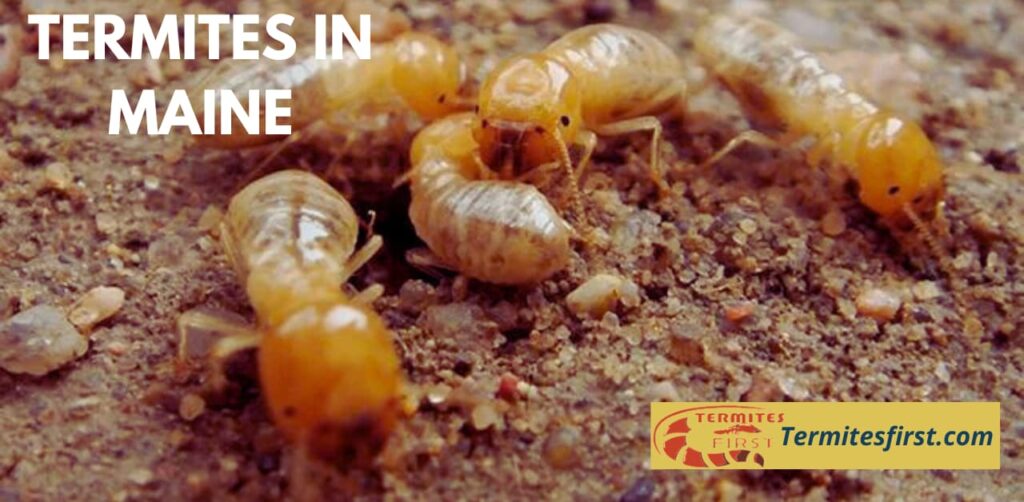
Timing of Swarms
Subterranean termites in Maine typically swarm from late May to early June. This period aligns with warmer temperatures and increased humidity. During this time, mature colonies release winged reproductive termites to find new nesting sites. I remember learning about this timing during a pest control seminar. It helped me understand when to be most vigilant.
Conditions for Swarming
Several conditions trigger termite swarming behavior. Warm weather is the primary factor, often following a rainstorm. Increased moisture levels in the soil also play a significant role. These factors create an ideal environment for termites to emerge. The combination of warmth and humidity signals that it’s time to reproduce and expand their colonies.
Monitoring for Activity
Monitoring for swarming activity is essential for early detection of infestations. Homeowners can look for signs such as discarded wings near windows or doors. I often recommend checking these areas after a storm during swarming season. Noticing these signs can help catch a problem before it escalates.
Another effective method is setting up light traps around the home. These traps attract flying insects, including termites. Regularly inspecting these traps can provide insight into termite activity nearby. Homeowners should keep an eye on wooden structures for any signs of damage.
Being proactive is key to managing termite issues. Regular inspections by pest control professionals can help identify potential problems early. They can assess the property and recommend treatments if necessary.
Signs of Infestation
Indicators
Several signs indicate a termite infestation in homes. One primary sign is the presence of mud tubes. These tubes are often found along walls or foundations. They serve as pathways for termites traveling between their nests and food sources. Another indicator is the presence of coarse sawdust near wooden objects. This sawdust comes from the termites boring into wood.
Look for damaged wood that sounds hollow when tapped. This damage is often a result of active infestations. Check for small holes in wooden surfaces, which can indicate where termites have entered. I remember finding tiny holes in my basement beams, leading me to suspect a termite problem.
Differentiation
It’s important to distinguish between signs of termite damage and those caused by other pests. Termites typically leave behind a smooth tunnel inside the wood. In contrast, ants create rougher holes and often leave behind debris outside their nests.
Another difference lies in the type of damage. Termite damage tends to be more extensive and hidden within the wood structure. On the other hand, carpenter ants usually cause visible surface damage. Identifying these differences can help homeowners take appropriate action sooner.
Regular Inspections
Conducting regular inspections is crucial for detecting early signs of infestation. Inspect areas prone to moisture, such as basements and crawl spaces. Look for any signs of dry rot, which can attract termites seeking soft wood.
Homeowners should consider hiring professionals for thorough inspections at least once a year. These experts can spot signs that might go unnoticed by untrained eyes. I’ve learned that early detection can save homeowners significant repair costs down the line.
Action Steps
If you suspect an infestation, here are steps to take:
- Inspect your home thoroughly.
- Look for mud tubes, sawdust, and hollow-sounding wood.
- Consult pest control professionals if you find signs of infestation.
- Schedule regular inspections to prevent future infestations.
Risks to Homes
Structural Damage
Subterranean termites cause significant damage to homes. They can weaken wooden structures over time. I have seen homes where the damage was so severe that entire walls had to be replaced. These pests create tunnels in wood, making it hollow and fragile. This type of damage often goes unnoticed until it becomes severe.
The risk increases in warm locations, which attract these pests. Maine may not seem like a prime area for termites, but they thrive in certain cities. Areas with fallen trees or decaying wood provide ideal conditions for them. Over time, the structural integrity of a home can be compromised if termite issues are ignored.
Financial Implications
Repairing termite damage can be costly for homeowners. The average cost of treatment and repairs can range from $1,500 to over $5,000. This price varies based on the extent of the infestation and damage. Many homeowners may not realize how quickly costs add up until it’s too late.
Insurance may cover some repair costs, but policies vary widely. I learned that many policies do not include termite damage as a covered event. Homeowners should check their insurance policies carefully to understand what is included. Without proper coverage, financial burdens can increase significantly.
Importance of Prompt Action
Addressing termite issues promptly is crucial. Early detection can save homeowners from extensive damage and high repair costs. I always advise friends and family to get regular inspections if they suspect an infestation. Quick action helps prevent further damage and keeps repair costs manageable.
Ignoring signs of infestation leads to more problems down the line. Termites work silently and can cause major issues before being noticed. Regular inspections by pest control experts help catch infestations early. Homeowners should also maintain their properties by removing fallen trees and wood debris around their homes.
Prevention Tips
Drainage Maintenance
Proper drainage around the home is essential. It helps reduce moisture levels that attract termites. I always check my gutters and downspouts to ensure they direct water away from the foundation. Maintaining a dry environment can significantly lower the risk of termite activity.
Ensure that your landscaping slopes away from the house. This prevents water from pooling near the foundation. Regularly inspect for any areas where water might collect. Keeping the area dry is one of the most effective termite prevention methods.
Regular Inspections
Regular maintenance checks are important for spotting potential entry points. Inspect your home at least twice a year. Look for cracks in walls, gaps around windows, or spaces in door frames. These vulnerabilities can allow termites easy access to your home.
I recommend checking wooden structures like decks and fences too. Termites often hide in these areas. If you find any signs of damage, address them immediately. Early detection is key to controlling infestations before they escalate.
Physical Barriers
Using physical barriers can effectively deter termite infestations. Install stainless steel mesh or concrete barriers during construction or renovations. These barriers prevent termites from reaching wooden parts of your home.
Consider using chemical treatments around the perimeter of your property. These treatments create a protective zone against termite activity. I’ve found that combining physical barriers with chemical solutions offers great protection.
Ongoing Monitoring
Ongoing monitoring is crucial for effective termite control. Set up regular inspections with pest control professionals. They can identify any signs of activity early on.
Consider installing monitoring stations around your property as well. These stations help detect termites before they reach your home. Regular checks can save you time and money in the long run.
Effective Treatment Options
Chemical Treatments
Chemical treatments are among the most common methods for eliminating termites. These include liquid termiticides and baiting systems. Liquid termiticides create a barrier in the soil, preventing termites from entering structures. They can be applied around the foundation of a building.
Baiting systems, on the other hand, involve placing bait stations in the ground. These stations contain slow-acting insecticides. Termites feed on the bait and take it back to their colony. This method targets not just the visible termites but also those hidden deep within the structure.
I have seen firsthand how effective these treatments can be when done correctly. However, safety precautions are vital when using chemical treatments. It is essential to follow all instructions carefully to avoid harmful effects on humans and pets.
Non-Chemical Treatments
Non-chemical treatments offer alternatives for those concerned about chemicals in their homes. These methods include heat treatment, cold treatment, and borate applications. Heat treatment raises the temperature of the infested area to kill termites. This method is effective and eco-friendly.
Cold treatment involves freezing areas where termites are present. This method is less common but can work in specific situations. Borate applications involve applying a borate solution to wood surfaces. This prevents future infestations while killing existing termites.
Both chemical and non-chemical options have their pros and cons. Chemical treatments often provide faster results but may pose health risks. Non-chemical methods are safer but may take longer to show effectiveness.
Professional Services
Severe termite infestations often require professional pest control services. Experts have access to advanced tools and techniques that homeowners typically do not possess. They can assess the extent of the infestation accurately.
I believe relying on professionals is crucial for severe cases. They understand local termite species and their behaviors better than anyone else. A professional service can also provide ongoing monitoring to prevent future problems.
The importance of hiring a qualified pest control company cannot be overstated. They will ensure that treatment plans are tailored to your specific situation.
Conclusion:-
I’ve learned that termites in Maine are a real threat. Understanding their behavior and signs of infestation is crucial. It’s not just about knowing the species; it’s about protecting our homes. Prevention and effective treatment options can save us from costly repairs and stress.
I urge everyone to stay vigilant. Regular inspections and proactive measures can make all the difference. Don’t wait for an infestation to take hold. Take action now to safeguard your home from these destructive pests. Let’s keep our living spaces safe and sound!
FAQ’s:-
Maine is primarily home to subterranean termites. These pests thrive in moist environments and can cause significant damage to wooden structures.
Look for mud tubes, discarded wings, or hollow-sounding wood. Early detection is key to preventing extensive damage.
In Maine, termite swarming typically occurs in late spring to early summer. This is when reproductive termites leave their colonies to mate and establish new ones.
Termites can cause severe structural damage by feeding on wood. This can lead to costly repairs and compromise the safety of your home.
To prevent infestations, eliminate moisture sources, seal cracks, and store firewood away from the foundation. Regular inspections also help catch problems early.
Effective treatments include liquid termiticides, bait systems, and fumigation. Consult a pest control professional for the best approach tailored to your situation.
Yes, hiring a licensed pest control expert ensures thorough inspection and effective treatment. Professionals have the tools and knowledge to handle infestations safely and efficiently.

